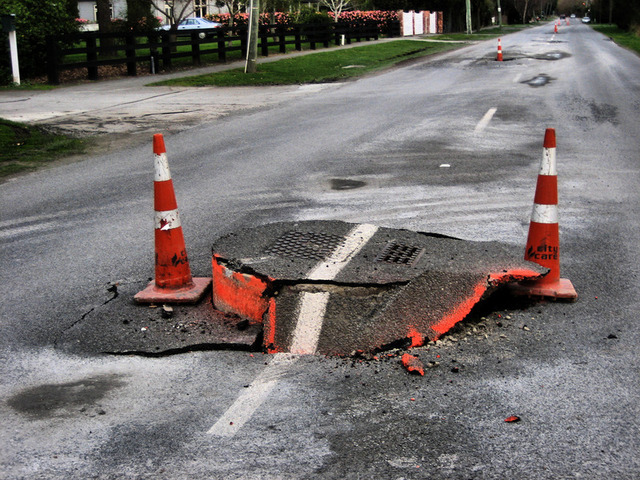
The past few years have seen an unusual number of epically large earthquakes, with several—in Sumatra, Chile, and Japan—reaching magnitudes of roughly 9.0. This has led a number of people to wonder whether large earthquakes cluster and, if they do, whether we should be getting nervous about when the next one will hit. A new analysis in PNAS, however, suggests the elevated activity is nothing unusual, although the long gap between recent activity and past monster quakes was statistically unlikely.
The authors went through the US Geological Survey's historic records, identifying every earthquake above magnitude 7.0 that occurred between 1900 and 2011. To eliminate aftershocks and local strain caused by initial earthquakes, the authors set a cutoff: any smaller earthquakes within three years and 1,000km of a quake were considered its aftershocks, and not incorporated into the analysis. This is a fairly liberal definition of aftershock, and takes two recent monster quakes out of the analysis, both over 8.5 and near the site of the first Sumatran quake. But it is consistent with what we know about how major quakes can add strain to areas at a considerable distance from where the fault actually ruptured.
The authors also justify this exclusion by noting that they actually care whether there's an uptick in global levels of activity, so local clusters of quakes shouldn't alter their analysis. In addition, they note that some of the statistics are fairly insensitive to the selection criteria—you can cut the distance by a third and still get similar results. Still, this is a pretty significant cutoff, since it greatly reduces the frequency of recent, large quakes.
One thing that their analysis makes clear is that the overall rate of large earthquakes—those over magnitude 7.0—is about average right now. It's just that more of those quakes are above 8.0. We are experiencing a record level of 8.0+ quakes, but it's only slightly above previous records.
Is that record level especially unusual? The authors randomized their earthquake catalog 100,000 times to get a statistical sense of the typical earthquake clustering. When selecting for magnitude 8.0 and above, 85 percent of these randomized sets contained an earthquake cluster similar to the one we've experienced since 2004. When the event size was raised to 8.5, 97 percent of the randomized sets contained a cluster like our recent one. A series of additional tests indicate that the distribution we see is consistent with a Poisson process, which indicates they are occurring randomly.
That large difference highlights the importance of the cutoff you choose in terms of magnitude. To get a greater sense of this, the authors took their randomized set and performed a stepwise analysis of it, starting at magnitude 8.0 and raising the cutoff by 0.1, looking for clusters at each cutoff. Three quarters of the resulting sets had a cluster that should occur only five percent of the time in a single random set. Just under a third had a cluster that should occur less than one percent of the time.
Is there anything unusual in the record? Sort of. There were no events greater than magnitude 8.5 for nearly 40 years, a gap that started in 1965 after an enormous Alaskan earthquake. In the randomized collection, this only showed up in 1.3 percent of the sets. But again, the authors point out that this depends on setting a very specific cutoff. In any case, that unusually large gap may have made the recent spate of large quakes more notable.
Overall, the authors conclude that globally, earthquakes are not clustering over time. There may be local clusters that were eliminated by their selection criteria, but we have mechanisms that can explain why local clusters should occur. And that highlights another issue the authors have with the idea of a global cluster: we don't know of any mechanism that could possibly create one.
The statistical analysis is pretty compelling if you accept their selection criteria. But that acceptance hinges on whether or not the recent spate of massive earthquakes in Indonesia constitutes an independent event or not, and there is reasonable evidence that they are connected. And there's one thing that the authors' analysis concludes that shouldn't be controversial: we've only got good records for the last century or so, and that makes it really difficult to rule anything out definitively.
PNAS, 2011. DOI: 10.1073/pnas.1118525109 (About DOIs).
Listing image by Photograph by Martin Luff
reader comments
30